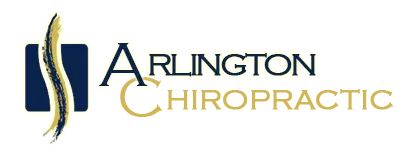Both the serratus anterior and lower trapezius muscles are important for scapular stability and proper shoulder mechanics. Strengthening and activating these muscles can help to improve shoulder function and reduce the risk of injury. It's important to note that scapular stabilization is a complex process involving multiple muscles, and proper movement patterns and mechanics should always be emphasized in addition to targeted exercises for specific muscles.
The serratus anterior muscle is located on the side of the chest, originating from the upper ribs and inserting onto the medial border of the scapula. It plays a critical role in stabilizing the scapula by protracting it (moving it forward) and upwardly rotating it. During overhead movements, the serratus anterior helps to maintain proper scapular positioning and prevents the scapula from winging (moving away from the rib cage). Weakness or dysfunction of the serratus anterior can lead to shoulder impingement and other shoulder injuries.
The lower trapezius muscle is located in the middle and lower part of the back, originating from the spine and inserting onto the scapula. It functions to stabilize the scapula by depressing it (moving it downward) and upwardly rotating it. It works in conjunction with the serratus anterior to ensure proper scapular positioning during movement. Weakness or dysfunction of the lower trapezius can also contribute to shoulder impingement and other shoulder injuries.
Here are some exercises to help improve the function of the serratus anterior and lower trap:
1. Foam Roller Wall Slide with Protraction and External Rotation
Equipment needed: Foam roller, wall
Instructions:
- Start by standing facing a wall with your feet shoulder-width apart. Place the foam roller vertically between your spine and the wall at the level of your shoulder blades.
- With your arms in a "W" position (elbows bent, forearms resting on the foam roller), externally rotate your shoulders by rotating your forearms outward until your palms face away from the wall. At the same time, protract your shoulder blades forward.
- Once you reach your end range of motion in external rotation and protraction, slide the foam roller up the wall. This movement should feel like a shoulder blade slide, and you should feel the muscles of your upper back working.
- Once you reach the top of the movement (when your hands are at shoulder height), maintain external rotation and protraction.
- Hold this position for a few seconds, then slowly return to the starting position with your forearms resting on the foam roller.
- Repeat this movement for 8-10 reps, focusing on maintaining proper form and engaging your serratus anterior muscles throughout the exercise.
- If you find this exercise too challenging, you can start with a smaller range of motion or reduce the number of reps. Conversely, if you find it too easy, you can increase the range of motion or add resistance by holding light weights in your hands.
2. Prone T with Shoulder Depression
Equipment needed: Exercise mat, light dumbbells (1-3kg)
Instructions:
- Lie on your stomach on an exercise mat with your arms extended out to the sides, holding light dumbbells in each hand.
- Keep your palms facing the floor and your shoulders away from your ears.
- Engage your shoulder blades by pulling them down towards your feet.
- Keep your arms straight and lift them off the floor, forming a "T" shape with your body.
- As you lift your arms, focus on keeping your shoulder blades depressed and your lower traps engaged.
- Hold the "T" position for a few seconds, then slowly lower your arms back to the starting position.
- Repeat for 8-10 reps, focusing on proper form and control throughout the exercise.
- If you find this exercise too challenging, you can reduce the weight of the dumbbells or decrease the number of reps. Conversely, if you find it too easy, you can increase the weight or add more reps.
This exercise targets the lower trapezius muscles and helps to strengthen them. By keeping the shoulder blades depressed and focusing on the lower traps, you can help improve your shoulder mechanics and reduce the risk of shoulder injuries.
